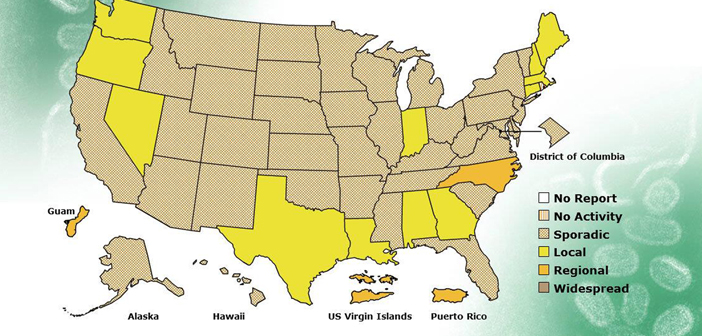By Deniz Alpaslan
While seasonal influenza (flu) viruses can be detected year-round in the United States, flu viruses are most common during the fall and winter seasons. The timing and duration of flu seasons can vary, but flu activity often begins to increase in October. Most of the time flu activity peaks between December and February, although activity can last as late as May.1
Cold and flu viruses unfortunately don’t discriminate against travelers, and contracting one can quickly and easily ruin a trip for guests. To keep guests healthy during their stay and protect staff from absences due to illness, properties should intently focus on removing and reducing the presence of harmful bacteria, viruses and fungi that can potentially interrupt and shorten guests’ visits.
Guest satisfaction should always be your number-one priority. Thankfully, you can look to your housekeeping program to support this ongoing initiative by following a set of infection prevention best practices.
During the course of a trip, travelers encounter numerous germ hotspots – from rental car and Uber door handles, to airplane tray tables and hotel TV remotes. Without proper hygiene and disinfection, these germs can easily cause illness and spread quickly. In fact, in a June 2015 survey of more than 1,000 U.S. adults, 45 percent reported that they or their travel companions have gotten sick enough to seek professional health care while away from home on vacation.2
It’s every hotel’s responsibility to provide guests and staff with a clean environment to limit the occurrence and impact of infections.
Top tips for infection prevention
To keep cold and flu viruses at bay, especially during notoriously infectious winter months, hotels should follow a set of best practices. These tips will enhance both cleaning performance and efficiency.
Prepare before an outbreak occurs
Gather a team to meet and identify potential gaps in how your property would respond to specific challenges, such as an influenza outbreak. Then make recommendations such as additional storage for infection prevention supplies or required vaccinations among staff. Develop communication materials to display in case of an event to demonstrate desired behaviors among guests and staff.
Encourage proper hand hygiene
Make sure staff members understand the importance of frequent hand-washing. If soap and water are unavailable, an alcohol-based hand sanitizer can be used instead. Keep soap and paper towels well-stocked in the lobby as well as restaurant and pool area bathrooms to encourage hand hygiene among guests as well.
Select appropriate products
Your facility should have a proper range of cleaners, disinfectants and cleaning tools (cloths, spray bottles, etc.) on hand. Since disinfectants require a specific contact time to kill pathogens, choose products with shorter contact times to ensure greater compliance and allow for quick use during the day.
Disinfectants should be tough on pathogens, but gentle on surfaces, users and occupants. Many facilities are turning to disinfectants, for example, powered by Accelerated Hydrogen Peroxide® (AHP) technology, which kills HIV and Norovirus in one minute. This technology contains an active ingredient that breaks down into oxygen and water to reduce environmental impact.
Create standard cleaning practices and schedules
Practices should detail the materials needed, methods to use, surfaces or equipment to be cleaned/disinfected and the order in which these areas should be cleaned. Because surfaces are touched by many different people, staff should be aware of germ hotspots such as TV remotes, light switches, telephones, bathroom faucets and doorknobs. Germs can also lurk on less obvious surfaces such as ice buckets, in-room menus and hair dryers. Develop cleaning schedules for areas such as the front desk, public restrooms, fitness centers, etc., for times of normal risk and outbreak risk.
Validate the cleaning process
It’s important to know that proper cleaning and disinfecting is being performed. A program that monitors such processes ensures hotels achieve the highest level of clean and guest satisfaction. Properties can implement mobile and easy-to-use auditing platforms to identify cleaning performance and trends. Timely notification of patterns can mean the difference between defeating and falling victim to an outbreak.
Give guests the relaxing and an illness-free stay they expect. Make sure to follow best practices, and your property will be well on its way to providing a cleaner environment, and receiving positive praise and increased bookings in return. ■
Deniz Alpaslan is the marketing director of Sealed Air Diversey Care’s North American Hospitality and Food Service Sector. Alpaslan has been with Diversey Care since 2002 and has held positions of increasing sales, strategic business development and marketing leadership responsibility in the United States and Europe. Alpaslan has a Bachelor of Science in Geological Engineering and an MBA from Bilkent University specializing in international marketing.
1 Centers for Disease Control, www.cdc.gov/flu/about/season/flu-season.htm.
2 Survey conducted by Kelton Global and sponsored by Teladoc, www.businesswire.com/news/home/20150730006324/en/Sun-sand-and…sick.




